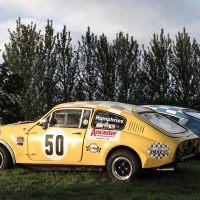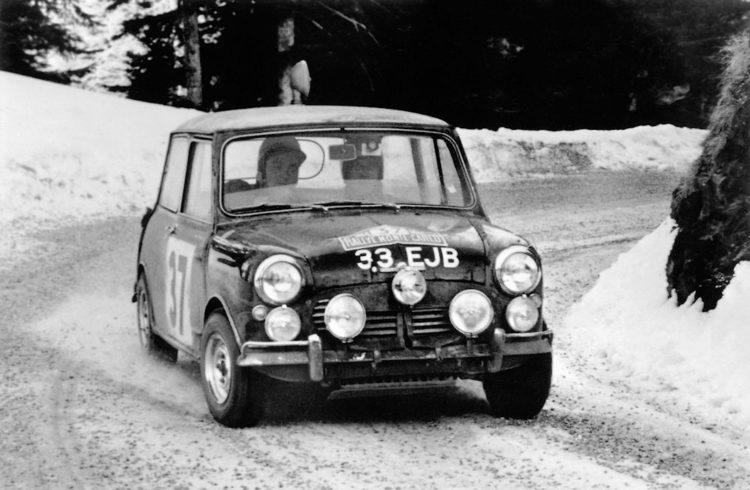Geoff Maxted, founder of DriveWrite Automotive, examines how one tiny car changed the course of history.
After World War II, it became apparent that the cars of Britain were dated in both technology and design at a time when petrol was still rationed and people were recovering from the horror of conflict. As a nation we needed cheering up. The big, black behemoths of the automotive pre-war years were starting to look their age and consumed scarce fuel at an alarming rate.
Meanwhile, across the pond, the American car industry was burgeoning with fantastic, chrome-bright and modern vehicles rolling off the production lines. Something needed to be done.
Early Days: Instant Allure
One day, a man said, “Hang on a minute lads, I’ve got a great idea.” Unfortunately for my story, that man was Michael Caine in The Italian Job movie. It is not known what the engineer Alec Issigonis said when he came up with the great idea of the transverse engine in a very small and economical car, but the outcome was a vehicle that in 1959 transformed an industry.
The British Motor Corporation Mini was born.
Although front-wheel drive was not a new idea, the genius of turning the diminutive 850cc BMC ‘A’ Series four-cylinder engine sideways to allow 80 percent of the floorpan of this small car to be given over to passengers and luggage was. The Mini, with its funky round centre console and 18-inch long stick shift, went on to become the iconic car of the 1960’s and was the true star of The Italian Job. The Mini continued to be popular for the next two decades, over which time it evolved, becoming perhaps less attractive but certainly more advanced.
Despite the instant allure, the fact is the build quality, especially by today’s standards, was terrible. It was a cheap car and made no apologies for that. The Mini was a ‘people’s car,’ a four-seat runaround for the sweaty masses and the masses bought into it in droves. It handled well, sipped fuel, and offered the average driver that ‘in-crowd’ vibe.
Related: Looking back to a time when tiny cars ruled the Earth.
The Mini Was My First Car
It came courtesy of my father, who was a policeman and therefore knew people who knew people and was thus able to source things through, let’s say, alternative channels. My car was stripped out inside, although there wasn’t much in there in the first place. It had spent its early years as a modest race car, seen regularly in local events at the famous Brands Hatch circuit.
The race car engine was stripped out (Boo!) and replaced by the standard unit but it didn’t take long to replace the cylinder head with a tuned job, and add a few other unwise modifications to give it a little bit more go. To be honest, I didn’t give much thought to improved braking and the like but, you know, I was young.
In due course, the car was replaced with a nice red Mini Cooper which brought down the vital zero to 60 time to a breathtaking 17.2 seconds. My friends even bought me a drilled-out, wood-rimmed steering wheel for my birthday. Yes folks, it was a babe magnet all right; it’s just that when they saw the driver . . .
Latter Years: The Bell Tolls
From inception, the Mini proved immensely popular in Motorsport as people found ways to tune or replace the original puny power plant. By 1964, the car was sweeping the board on the international rally scene. The company jumped on this and quickly introduced the more powerful Cooper and Cooper S versions, the latter even making an appearance as a police car. Later variants lost that early magic as designers struggled to stretch out the useful life of the model and sales slumped as the car became superseded by other designs.
Eventually the bell tolled in 2000. The Mini was no more.
Of course, time moves on for us all and the desire for bigger, faster cars took over. Even my Cooper was passed on to the new kid on the block as I was dragged, kicking and screaming, into the world of grown-up motoring.
The Lovable Rascal Returns
When BMW absorbed what was left of the moribund UK company, now called the British Leyland Group, it stripped out the assets but retained the Mini name. This was a smart move as it turned out because, although the car was no longer being built, it remained popular as enthusiasts, to this day, continued to keep fifty-year-old cars on the road, thus maintaining the legend.
The German brand was quick to see the opening of a niche and began producing the Mini as we know it in the 21st Century. As a clever marketing ploy, they retained the round centre dash but now packed it with the latest technology. Although purists may grumble, BMW have somehow managed to incorporate at least some of the historic sense of the original car into a modern product, even if the lovable rascal has grown up and gained weight and a big city suit.
Rose-Tinted Glasses
The hard truth is that in so many ways, the latest version is far better than the original from 60 years ago. Although, anyone who loves cars would give almost anything to own a 1959 original. I know I would.
After the war years, Britain yearned for a fresh start and, for young people at least, that fresh start began in 1959 with Ricky Nelson and Elvis Presley and Marty Wilde (UK rocker. You had to be there.) And of course the BMC Mini. The 1960’s blossomed into an era of new music, new fashions led by the likes of Mary Quant and Carnaby Street, free love and better prospects and free love (so uninhibited I mentioned it twice!).
It was time of peace and rejuvenation and the Mini ruled. It was more than just transport; a whole generation suddenly had the freedom of the road and we made the most of it. At least I think that’s how I remember it. It’s all a bit hazy, man.
Geoff Maxted is a motoring writer, photographer, and author of our Letter From The UK series. Follow his work on Twitter: @DriveWrite
International Mini Meeting 2017 (Westport House, Ireland) Gallery







































Gallery & Cover Photos: BMW Group PressClub.
from Automoblog.net https://ift.tt/2GAySp0



No comments:
Post a Comment